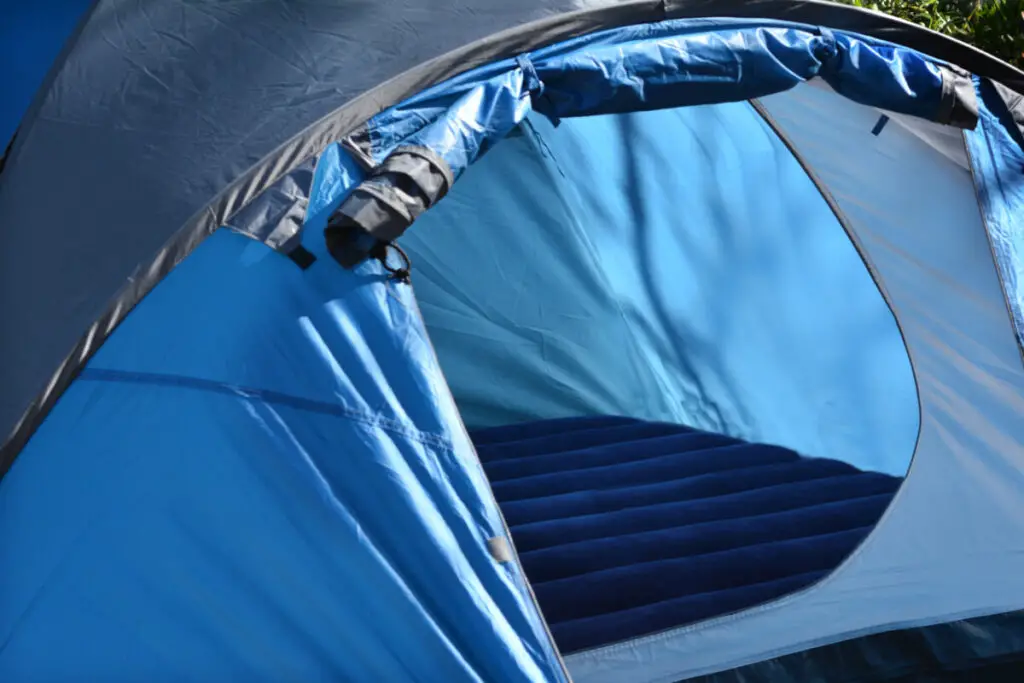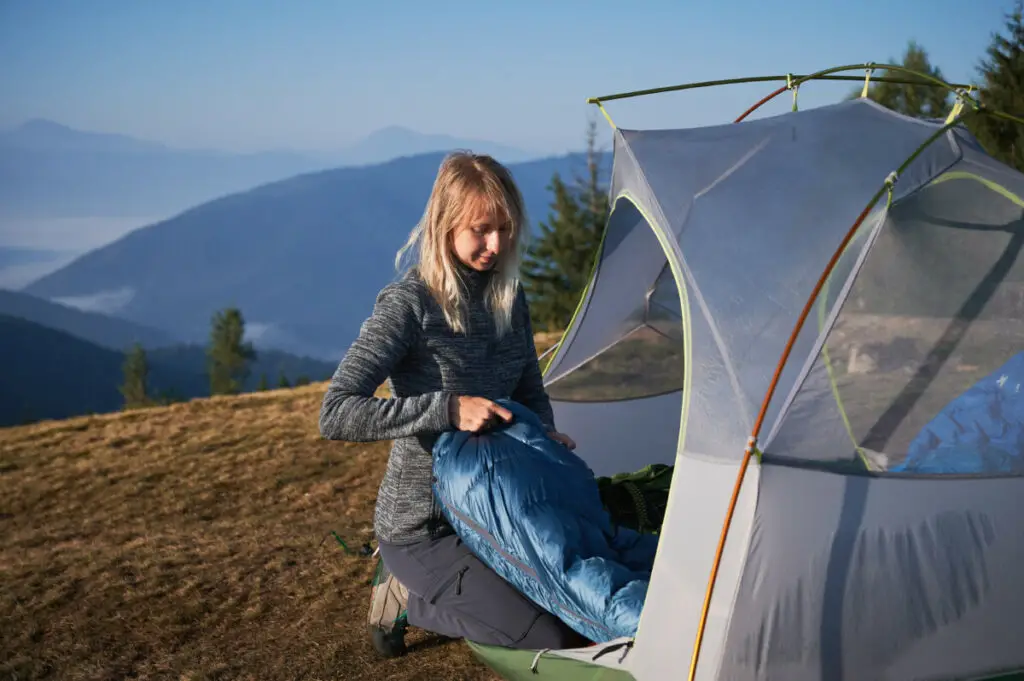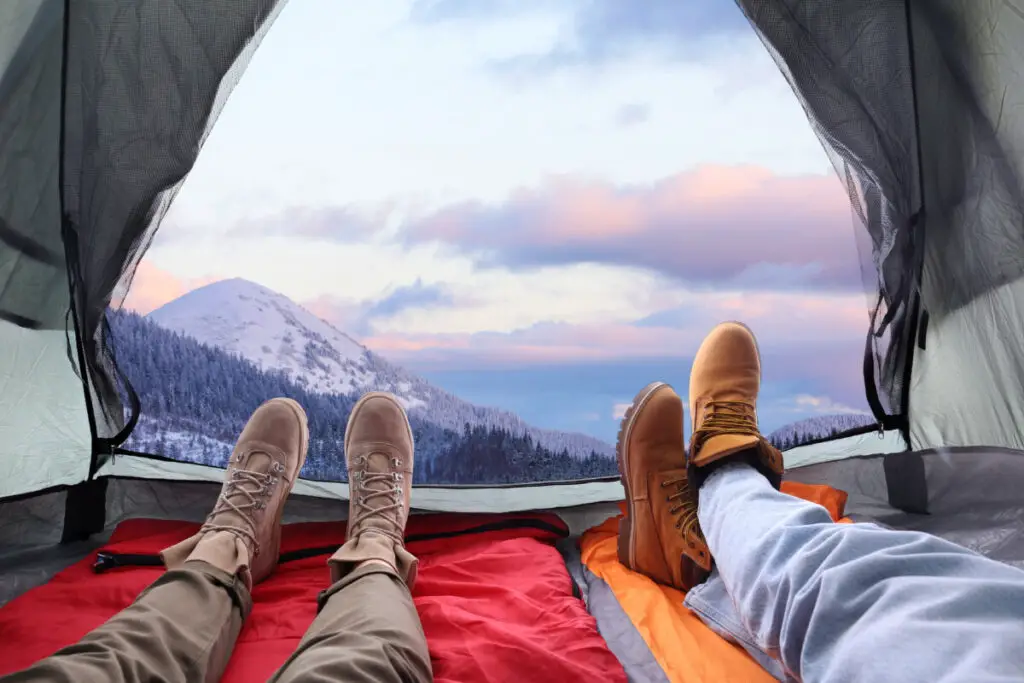
Camping in comfort is always a win-win situation: You get to enjoy the great outdoors while still being well-rested. Air mattresses are fantastic for a comfortable night of rest in the woods or mountains, but will they keep you as warm as just sleeping on the ground?
Air mattresses do not typically have layers of insulation and can get cold during the night when camping. To make an air mattress warmer, insulate it with additional layers. Placing a large blanket or unzipped sleeping bag underneath can help protect cold air from seeping through the air mattress.
Just because air mattresses can get cold from underneath does not mean that you shouldn’t use one while camping. Making the mattress warm and comfortable is just as easy as inflating it. In fact, probably easier.
Adding Your Own Layers
Whether you’re deep in the woods, high in the mountains, or simply camping at a local site, things can get pretty chilly once the sun goes down. The air nearest to the ground gets very cold, which is why cold air will begin to seep into your air mattress from the bottom. Within a couple of hours, as the temperature of the air inside the mattress drops, the mattress itself can begin to feel uncomfortably cool, even freezing.
“Ever since I started camping with air mattresses I often froze in the middle of the night and wondered why that was and if I could prevent it.”
SmallCarCamp
To create a barrier between yourself and the cold air underneath, try adding your own layers of insulation. The main idea is to separate your mattress from both the ground and your body with additional blankets or sleeping bags. The thicker the blankets, or the more of them you add, the warmer it will be.
After you’ve inflated the mattress, try laying a blanket out flat on top of the mattress before putting your sleeping bag down and setting up your bedding. This will separate your body from the cold surface of the air mattress while you are sleeping. Bring an additional, large sleeping bag to unzip and lay down flat as a bottom insulating layer before inflating your air mattress. A rug or a foam pad will work as well. A layer of fabric below the mattress will also keep it from sliding around and will help protect it from anything in the ground beneath the tent that could puncture or damage it.
With each of these makeshift insulators, you’ll be able to protect yourself from the cold night air and continue to sleep comfortably.
Using a Thermal Topper

For camping while hunting or on another extended trip, you can buy a thermal air mattress topper. These are specially designed to retain warmth throughout the night, which is why they are perfect for overnight camping trips in colder areas or at high elevations. Placing a thermal pad or a regular foam sleeping pad on top of the air mattress has proven to be one of the most highly effective ways to insulate it.
Thermal air mattress toppers come in king, queen, and twin bed sizes. They’re made with metallic insulation materials that retain your body heat, reflecting it back so that you stay warm through the night. These toppers also are made of micro-plush material that is lightweight and easy to carry, but still effective at sending colder air downward and preventing it from reaching your body while you are sleeping.
Using a Portable Heater
If you have a camping generator or other access to electricity, bring a portable heater. Air mattresses usually get cold because of poor air circulation when the night temperature drops. A portable heater can help keep your tent or car at a regulated, pleasant temperature so that you can sleep comfortably all through the night. Set up the heater and have it running for several minutes before you get into bed. This will help the air in your tent begin to circulate and will start to raise the temperature of the air mattress itself. By the time you crawl into bed, you’ll be nice and cozy.
A word of warning: When it comes to space heaters, caution is key. Even small, portable heaters are capable of generating a lot of heat in a short amount of time. Never set up the heater next to anything that could catch fire, especially not the air mattress itself. Usually, a heater too close to a mattress will damage it or deflate it, and you wouldn’t want anything worse to happen. Keep the heater at least a foot or two away from the walls of the tent and anything else that is made of fabric.
If you do not have access to electricity but would still like to try using a portable heater, there are wireless warmers that you can easily pack along with the rest of your gear. Warmers like these are typically multipurpose and can be used as a camping stove as well. They’re incredibly convenient and well worth the investment if you’re a frequent camper.
Buying an Insulated Air Mattress

If you want to skip a few steps and avoid the hassle of coming up with your own means of insulation, simply buy an insulated air mattress. Insulated air mattresses are designed with an inner system of coils that provide physical support and increased air circulation. The extra layers of structure also prevent the mattress from deflating while you’re sleeping, which is a game-changer if you’ve ever had to suffer through the night on a lumpy air mattress.
If you purchase a new air mattress, just remember that most of them are made with vinyl. Vinyl needs to stretch a few times before it holds its shape well, so inflate the mattress one or two times before taking it on your actual camping trip. This will help it hold air more effectively and reach the level of firmness you’re looking for.

